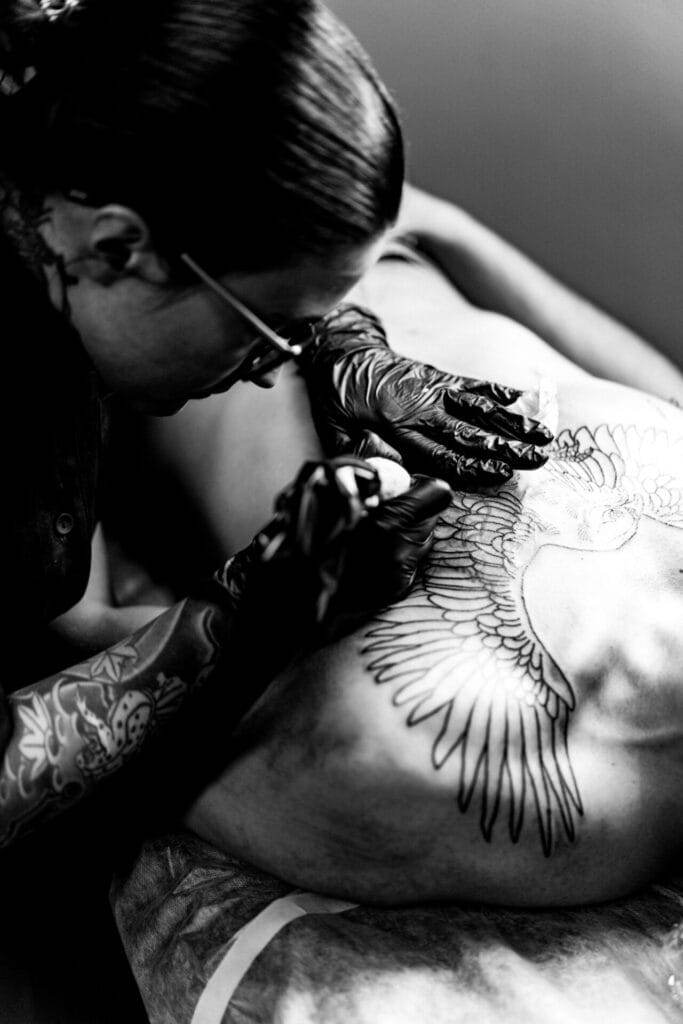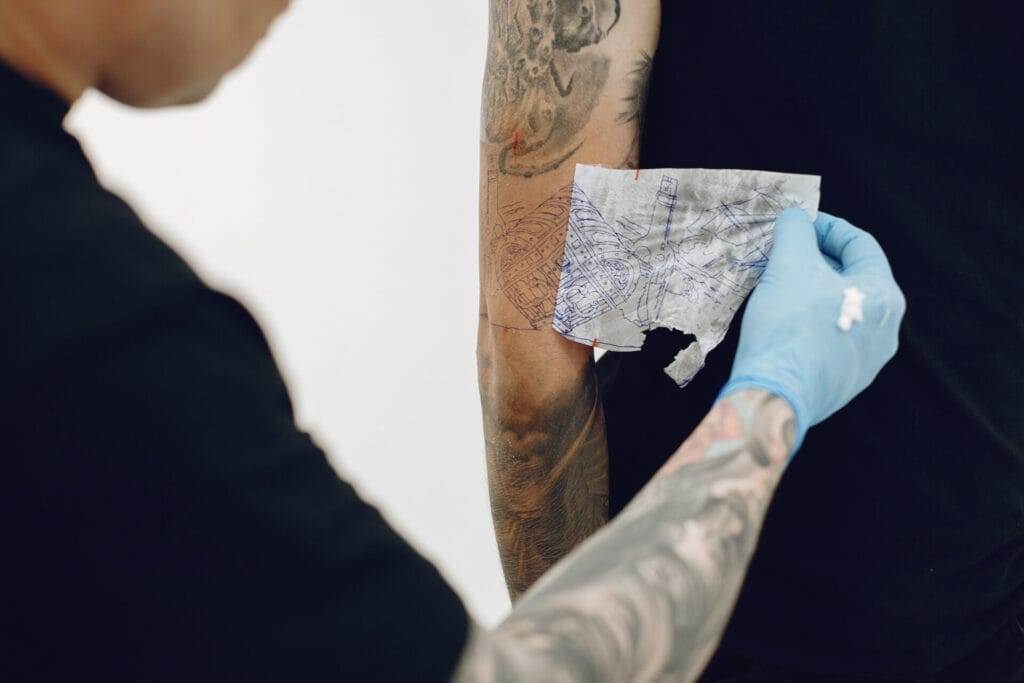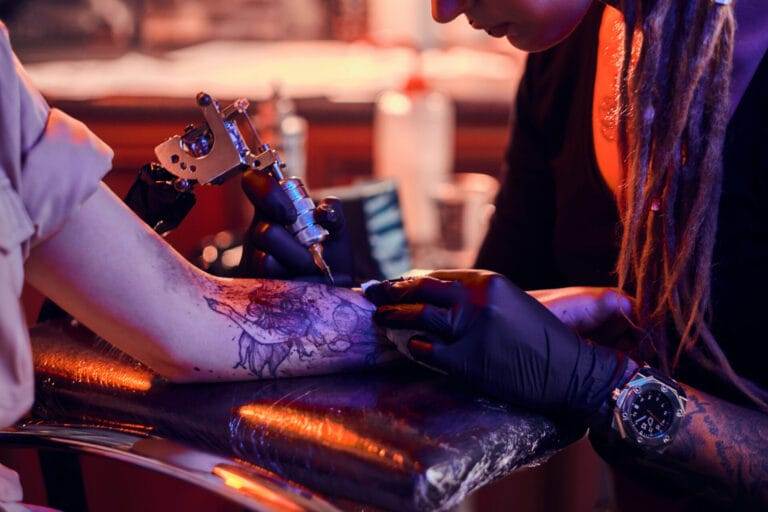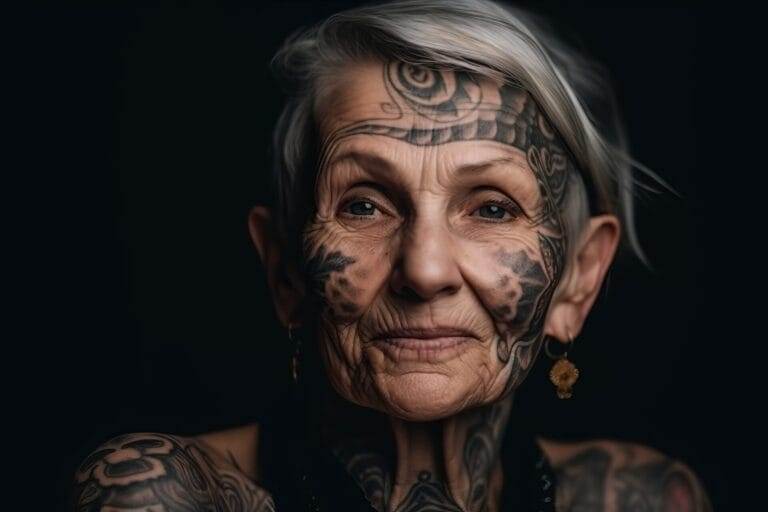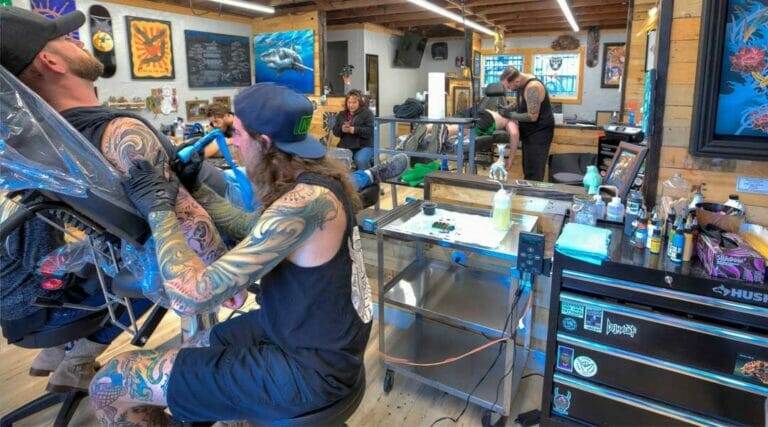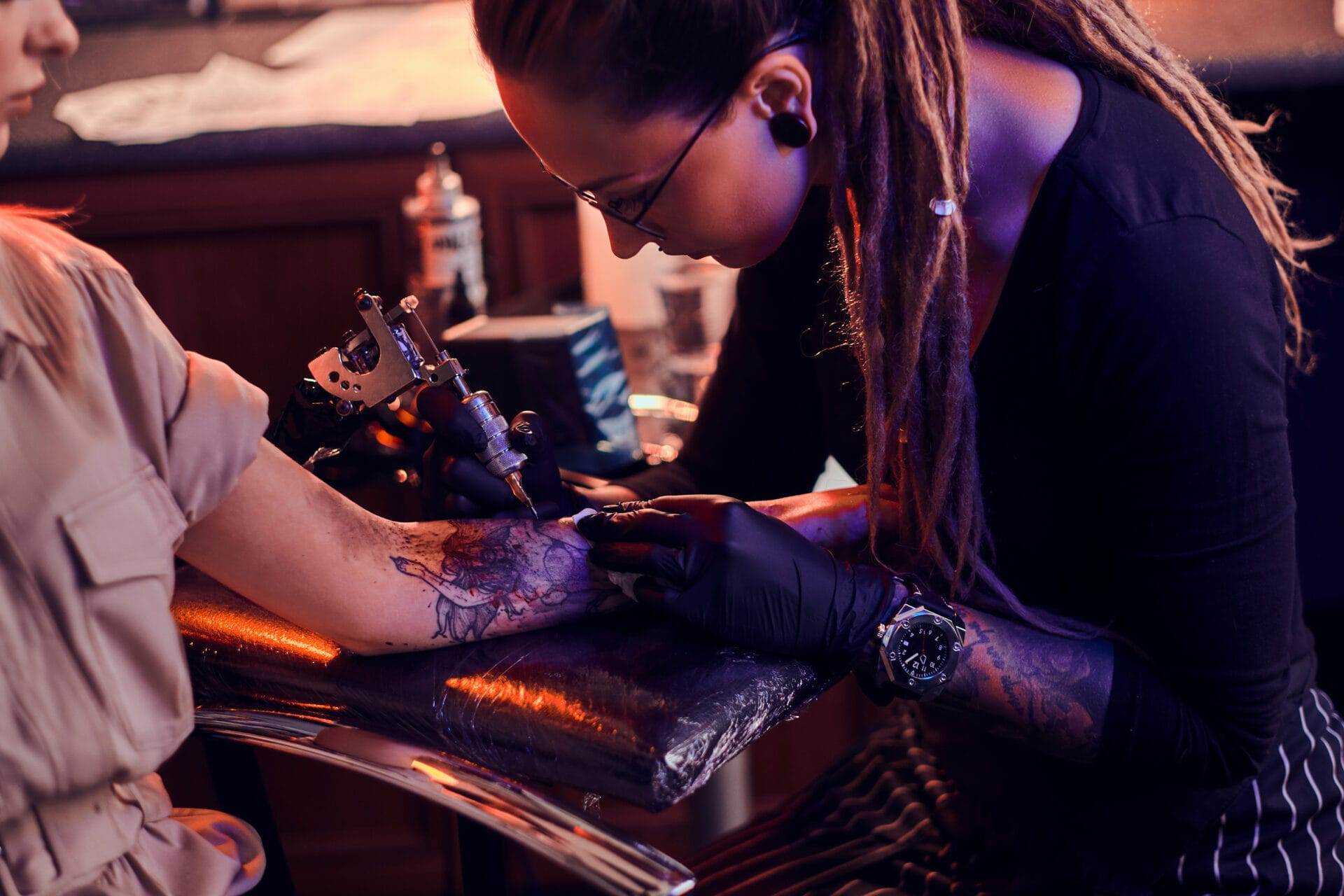
Black and grey tattoos have become increasingly popular in recent years, captivating the attention of tattoo enthusiasts and artists alike. These tattoos, as the name suggests, are created using only black and grey ink, resulting in a stunning monochromatic design. The simplicity and elegance of black and grey tattoos have made them a favorite among many individuals seeking a timeless and sophisticated piece of body art.
The beauty of black and grey tattoos lies in their ability to create depth and dimension using only shades of black and grey. By utilizing different levels of contrast, these tattoos can evoke a sense of realism and capture intricate details that may not be achievable with color tattoos. The absence of color allows the focus to be on the artistry and technique behind the tattoo, showcasing the skill of the artist in creating stunning shades and textures.
Understanding Contrast: The Role of Shadows and Light in Tattooing
Contrast is a fundamental element in black and grey tattoos, as it is what creates depth and dimension in the design. Contrast refers to the difference between light and dark areas within a tattoo. By strategically using shadows and light, tattoo artists can create the illusion of three-dimensionality on a two-dimensional canvas.
In black and grey tattoos, shadows play a crucial role in creating contrast. Shadows are used to add depth to the design, making certain areas appear recessed or raised. By carefully shading different areas of the tattoo, artists can create a sense of realism, making the design appear more lifelike.
Light is equally important in black and grey tattoos, as it helps to highlight certain areas and create a sense of illumination. By using lighter shades of grey or leaving certain areas untouched by ink, artists can make certain parts of the design stand out, adding visual interest to the overall composition.
The History of Black & Grey Tattoos: From Prison Culture to Modern Art
Black and grey tattoos have a rich history that dates back to the early 20th century. These tattoos were initially popularized within prison culture, where inmates would create makeshift tattoo machines using everyday objects. Due to limited resources, inmates would often use black ink mixed with water or other substances to create a greyish tone.
Over time, black and grey tattoos began to gain recognition outside of prison walls. Artists such as Jack Rudy and Freddy Negrete played a significant role in popularizing this style of tattooing. They refined the techniques used in black and grey tattoos, elevating them from crude prison art to a respected form of modern art.
Today, black and grey tattoos are celebrated for their ability to convey emotion and capture intricate details. They have become a staple in the tattoo industry, with many artists specializing in this style and pushing the boundaries of what can be achieved with black and grey ink.
The Advantages of Black & Grey Tattoos: Versatility, Timelessness, and Elegance
One of the main advantages of black and grey tattoos is their versatility. Unlike color tattoos, which may fade or change over time, black and grey tattoos tend to age gracefully. The monochromatic nature of these tattoos allows them to withstand the test of time, ensuring that they remain visually appealing for years to come.
Black and grey tattoos also exude a timeless elegance that is hard to replicate with color tattoos. The simplicity of the design allows the focus to be on the artistry and technique behind the tattoo, rather than being overshadowed by vibrant colors. This elegance makes black and grey tattoos suitable for a wide range of styles, from realistic portraits to intricate geometric patterns.
Furthermore, black and grey tattoos can be easily incorporated into existing body art or used as a base for future additions. The neutral tones of these tattoos make them highly versatile when it comes to designing a cohesive and visually appealing collection of body art.
Choosing the Right Design: How to Incorporate Contrast in Your Tattoo
When choosing a design for a black and grey tattoo, it is essential to consider how contrast can be incorporated effectively. Opting for a design that has a good balance of light and dark areas will ensure that the tattoo has depth and dimension.
Realistic portraits are a popular choice for black and grey tattoos, as they allow artists to showcase their skill in capturing intricate details and shading. Animals, landscapes, and floral designs are also well-suited for black and grey tattoos, as they can be enhanced by the use of shadows and light.
It is important to communicate your vision to the tattoo artist and discuss how they plan to incorporate contrast into the design. They may suggest adding additional elements or adjusting certain areas to ensure that the tattoo has a good balance of light and dark.
The Importance of Placement: Enhancing Contrast with Body Anatomy
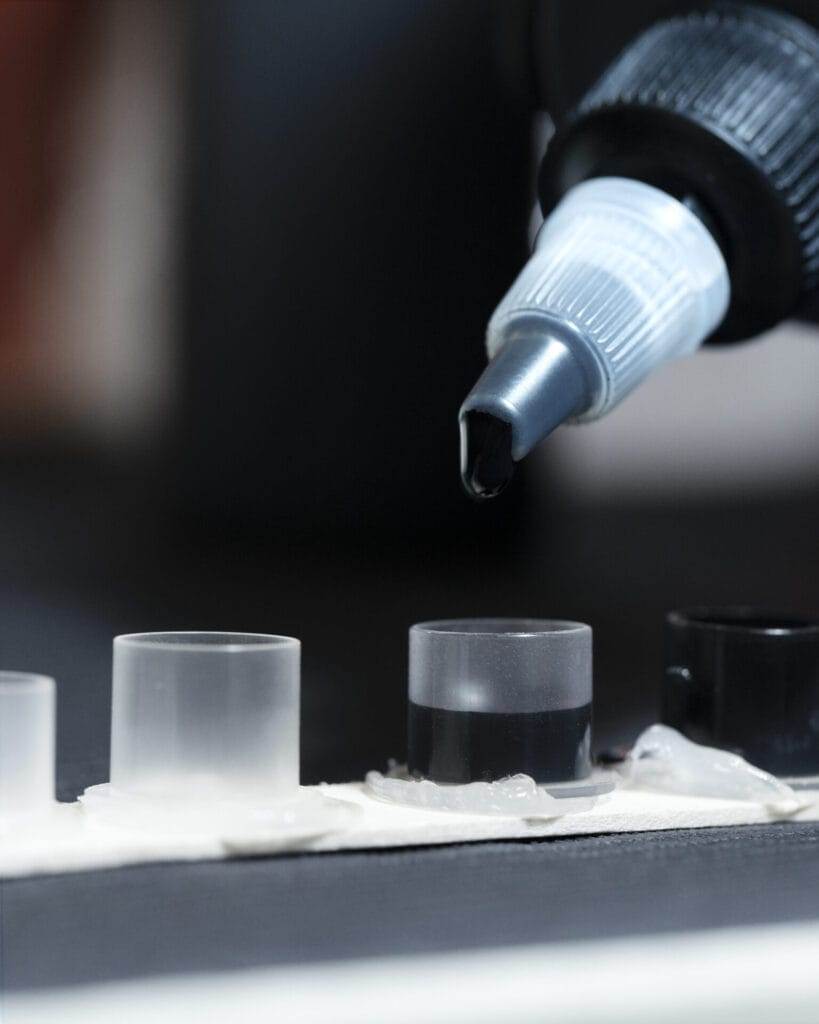
The placement of a black and grey tattoo can significantly impact the overall contrast and visual appeal of the design. Certain areas of the body may naturally have more shadows or contours, which can enhance the depth and dimension of the tattoo.
For example, placing a black and grey tattoo on the bicep or forearm can take advantage of the natural muscle definition, creating a more dynamic and visually striking design. Similarly, placing a tattoo on the back or chest can utilize the natural curves and contours of the body to enhance contrast.
It is important to consider how the placement of the tattoo will interact with your body anatomy. Consulting with a skilled tattoo artist can help you determine the best placement for your desired design, ensuring that it maximizes contrast and complements your body shape.
The Tattooing Process: Techniques and Tools for Achieving Perfect Contrast
Achieving perfect contrast in a black and grey tattoo requires skillful technique and the use of appropriate tools. Tattoo artists utilize various techniques to create different shades of grey and black, allowing them to achieve the desired level of contrast.
One common technique used in black and grey tattooing is called “whip shading.” This technique involves using a circular motion with the tattoo machine to create smooth transitions between light and dark areas. By varying the pressure and speed of the machine, artists can create different shades of grey, adding depth and dimension to the design.
Another technique commonly used in black and grey tattooing is called “dotwork.” This technique involves using a series of small dots to create shading and texture. Dotwork can be particularly effective in creating intricate details and adding visual interest to the design.
In terms of tools, tattoo artists typically use a variety of needles and ink shades to achieve the desired contrast. Different needle configurations can create different effects, allowing artists to achieve fine lines or bold shading. Additionally, using different shades of black and grey ink can help create a more nuanced and realistic design.
The Role of Skin Tone: Adapting Contrast to Different Skin Types
Skin tone plays a significant role in how contrast is perceived in a black and grey tattoo. The same design may appear differently on individuals with different skin tones, as the contrast between the ink and skin can vary.
For individuals with lighter skin tones, achieving high contrast may be easier, as the ink will stand out more against the skin. Artists can use darker shades of black and grey to create bold contrasts that are visually striking.
On the other hand, individuals with darker skin tones may require a different approach to achieve optimal contrast. Artists may need to use lighter shades of black and grey ink or incorporate negative space into the design to ensure that the tattoo stands out against the skin.
It is important to consult with a skilled tattoo artist who has experience working with different skin tones. They will be able to provide guidance on how to adapt contrast to your specific skin type, ensuring that the tattoo looks its best.
Aftercare Tips: Maintaining Contrast and Preserving Your Tattoo’s Beauty
Proper aftercare is crucial in maintaining the contrast and preserving the beauty of a black and grey tattoo. Following these tips can help ensure that your tattoo heals properly and retains its visual appeal:
1. Keep the tattoo clean: Gently wash the tattoo with mild soap and water, avoiding harsh scrubbing or excessive moisture.
2. Moisturize regularly: Apply a thin layer of fragrance-free, non-comedogenic moisturizer to keep the skin hydrated and prevent dryness or flaking.
3. Avoid direct sunlight: Protect your tattoo from prolonged exposure to sunlight, as UV rays can fade the ink and affect the contrast.
4. Avoid swimming or soaking: Refrain from swimming or soaking in water for at least two weeks to allow the tattoo to heal properly.
5. Follow the artist’s instructions: Your tattoo artist will provide specific aftercare instructions tailored to your tattoo. Follow these instructions carefully to ensure optimal healing and preservation of contrast.
The Future of Black & Grey Tattoos: Trends, Innovations, and Challenges
Black and grey tattoos continue to evolve and adapt to changing trends and innovations within the tattoo industry. Some current trends in black and grey tattoos include incorporating elements of realism, geometric patterns, and minimalistic designs.
Advancements in technology have also allowed for new techniques and tools to be used in black and grey tattooing. For example, digital tattoo machines can provide more precise control over needle speed and depth, allowing artists to achieve finer details and smoother shading.
However, with these advancements come challenges for black and grey tattoo artists. The demand for high-quality black and grey tattoos has increased, putting pressure on artists to continually improve their skills and push the boundaries of what can be achieved with this style.
Additionally, as black and grey tattoos become more mainstream, there is a risk of oversaturation in the market. Artists must find ways to differentiate themselves and create unique designs that stand out from the crowd.

Embracing the Art of Contrast in Black & Grey Tattoos
Black and grey tattoos have captivated the hearts of tattoo enthusiasts around the world with their timeless elegance and ability to create depth and dimension using only shades of black and grey. The art of contrast plays a crucial role in these tattoos, allowing artists to evoke a sense of realism and capture intricate details.
When choosing a black and grey tattoo, it is important to consider how contrast can be incorporated effectively. The placement of the tattoo can significantly impact its visual appeal, as certain areas of the body may naturally have more shadows or contours.
Achieving perfect contrast in a black and grey tattoo requires skillful technique and the use of appropriate tools. Tattoo artists utilize various techniques, such as whip shading and dotwork, to create different shades of grey and black.
Skin tone also plays a significant role in how contrast is perceived in a black and grey tattoo. Artists may need to adapt their approach based on the individual’s skin tone to ensure optimal contrast.
Proper aftercare is crucial in maintaining the contrast and preserving the beauty of a black and grey tattoo. Following the artist’s instructions and taking steps to protect the tattoo from direct sunlight and excessive moisture can help ensure optimal healing.
As black and grey tattoos continue to evolve, artists must find ways to differentiate themselves and create unique designs that stand out from the crowd. The future of black and grey tattoos holds exciting possibilities, with advancements in technology allowing for new techniques and tools to be used in this style.

